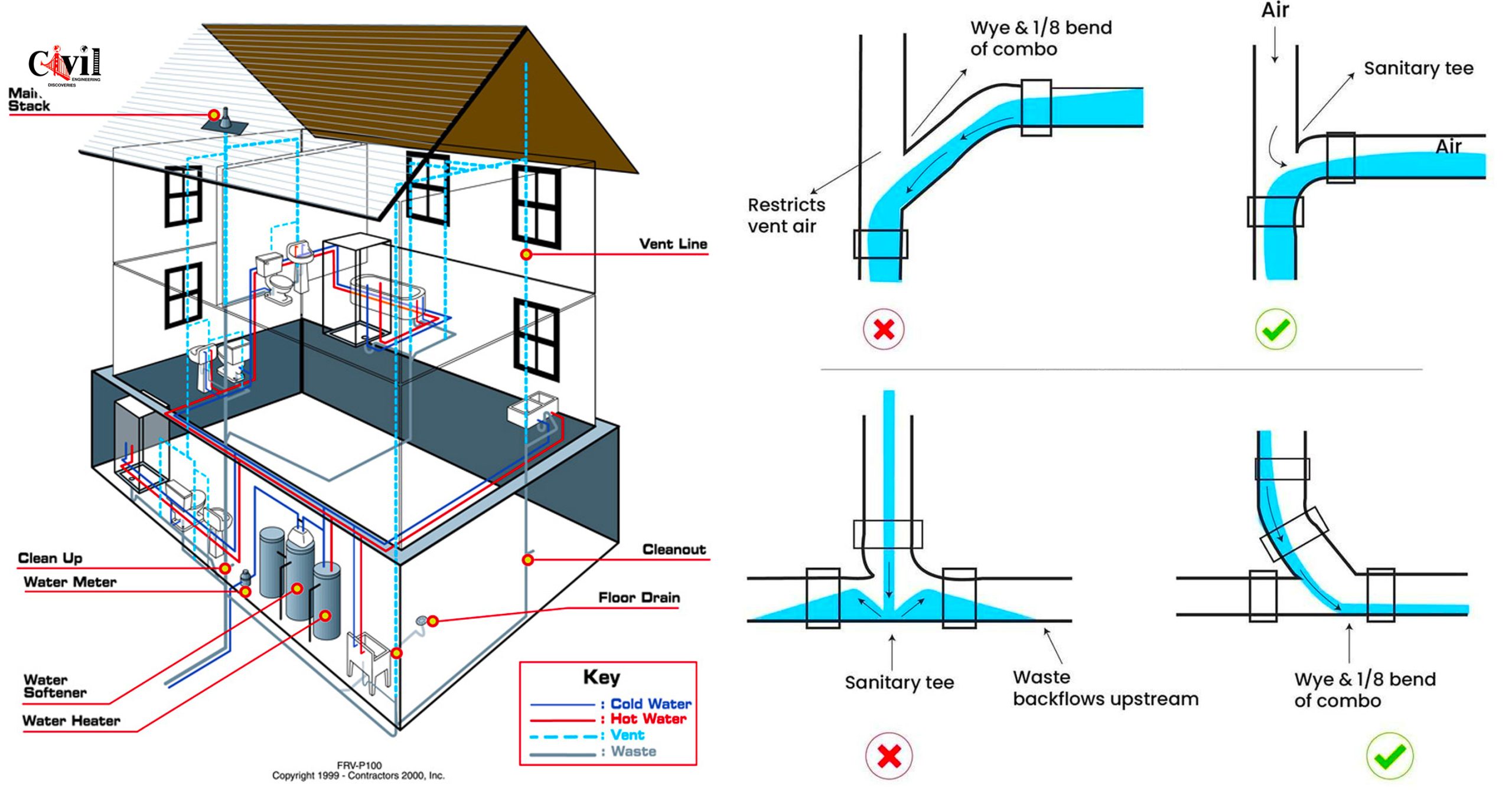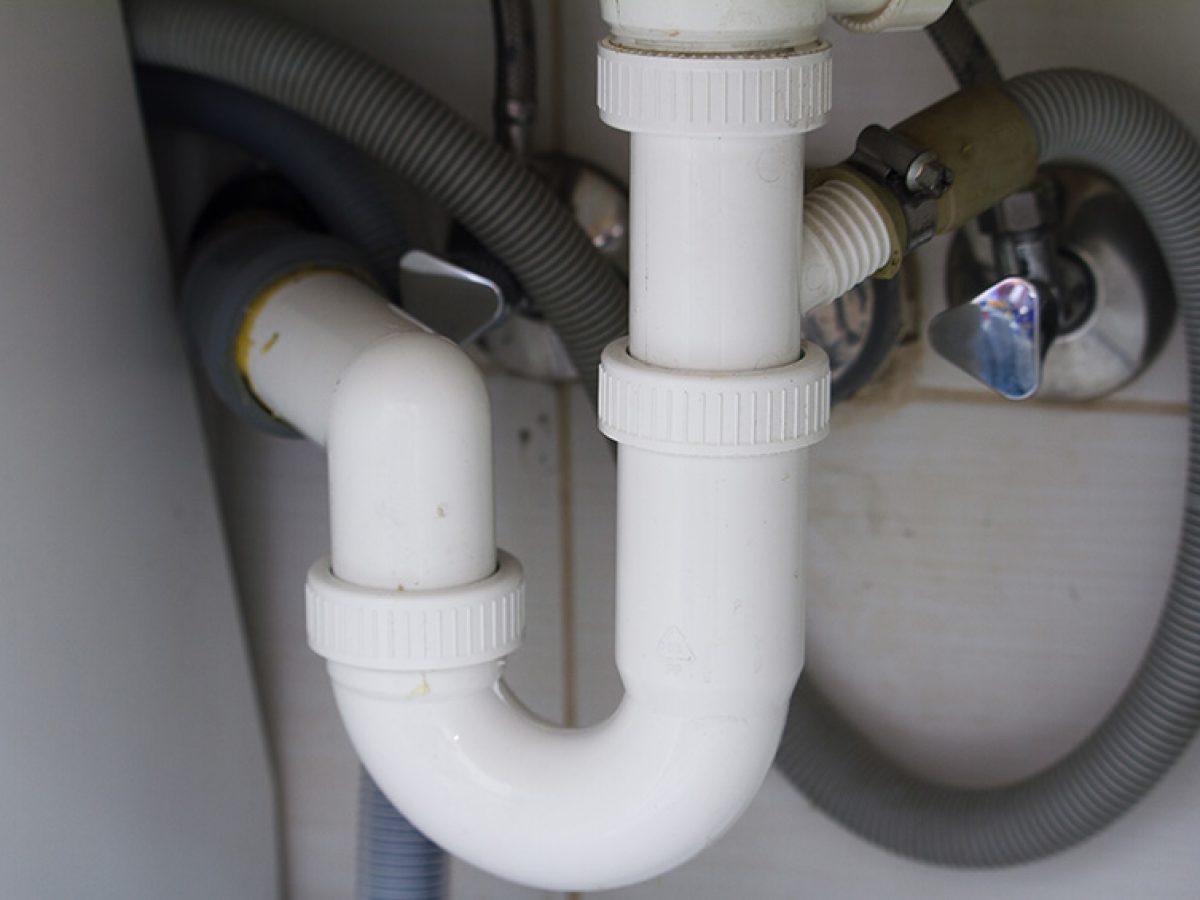We've come across the article about Exploring Your Homes Plumbing Anatomy below on the web and decided it made good sense to relate it with you on this site.

Understanding exactly how your home's pipes system functions is essential for each property owner. From supplying tidy water for drinking, food preparation, and showering to safely removing wastewater, a properly maintained plumbing system is crucial for your household's wellness and convenience. In this thorough overview, we'll explore the intricate network that composes your home's plumbing and deal ideas on maintenance, upgrades, and managing common issues.
Intro
Your home's plumbing system is greater than just a network of pipes; it's an intricate system that ensures you have access to tidy water and efficient wastewater elimination. Understanding its components and exactly how they collaborate can aid you avoid expensive repair work and ensure whatever runs efficiently.
Fundamental Elements of a Plumbing System
Pipelines and Tubing
At the heart of your pipes system are the pipelines and tubing that lug water throughout your home. These can be made of numerous materials such as copper, PVC, or PEX, each with its benefits in terms of durability and cost-effectiveness.
Components: Sinks, Toilets, Showers, etc.
Fixtures like sinks, commodes, showers, and bathtubs are where water is utilized in your home. Comprehending how these components connect to the plumbing system aids in diagnosing troubles and planning upgrades.
Shutoffs and Shut-off Points
Valves manage the flow of water in your pipes system. Shut-off shutoffs are important throughout emergency situations or when you require to make repair work, enabling you to isolate parts of the system without interfering with water flow to the whole residence.
Supply Of Water System
Main Water Line
The major water line connects your home to the community water or a private well. It's where water enters your home and is distributed to numerous fixtures.
Water Meter and Pressure Regulator
The water meter steps your water usage, while a stress regulator makes sure that water moves at a safe pressure throughout your home's pipes system, preventing damage to pipes and components.
Cold Water vs. Warm water Lines
Understanding the distinction between cold water lines, which supply water straight from the major, and hot water lines, which carry heated water from the hot water heater, assists in repairing and planning for upgrades.
Drainage System
Drain Water Lines and Traps
Drain pipes carry wastewater far from sinks, showers, and commodes to the sewage system or septic tank. Catches prevent sewage system gases from entering your home and additionally catch particles that could trigger blockages.
Air flow Pipes
Ventilation pipes enable air right into the drain system, preventing suction that can slow drain and create catches to empty. Appropriate air flow is essential for maintaining the integrity of your pipes system.
Relevance of Proper Water Drainage
Ensuring appropriate drainage avoids backups and water damages. Regularly cleaning drains and preserving catches can avoid pricey repair work and extend the life of your plumbing system.
Water Heater
Kinds Of Hot Water Heater
Water heaters can be tankless or typical tank-style. Tankless heating systems warm water as needed, while containers keep heated water for instant usage.
Just How Water Heaters Attach to the Pipes System
Recognizing just how hot water heater connect to both the cold water supply and warm water circulation lines aids in diagnosing issues like insufficient warm water or leakages.
Upkeep Tips for Water Heaters
Regularly flushing your water heater to remove debris, examining the temperature level setups, and inspecting for leaks can extend its lifespan and boost energy efficiency.
Usual Pipes Issues
Leakages and Their Reasons
Leaks can take place as a result of aging pipes, loosened fittings, or high water pressure. Dealing with leakages quickly protects against water damage and mold and mildew development.
Clogs and Blockages
Obstructions in drains pipes and bathrooms are often brought on by purging non-flushable items or a buildup of oil and hair. Utilizing drain displays and being mindful of what decreases your drains can protect against clogs.
Indicators of Plumbing Troubles to Look For
Low water pressure, slow-moving drains, foul odors, or uncommonly high water costs are signs of prospective pipes problems that need to be dealt with promptly.
Plumbing Upkeep Tips
Normal Assessments and Checks
Set up yearly plumbing examinations to catch concerns early. Look for indications of leaks, deterioration, or mineral accumulation in taps and showerheads.
Do It Yourself Maintenance Tasks
Easy jobs like cleansing faucet aerators, looking for toilet leaks making use of color tablets, or shielding subjected pipelines in chilly environments can avoid significant pipes concerns.
When to Call an Expert Plumbing Professional
Know when a plumbing problem calls for professional experience. Trying complex repair services without correct knowledge can result in more damage and greater repair costs.
Upgrading Your Pipes System
Factors for Upgrading
Upgrading to water-efficient components or changing old pipes can boost water top quality, reduce water expenses, and boost the worth of your home.
Modern Pipes Technologies and Their Advantages
Discover innovations like smart leak detectors, water-saving bathrooms, and energy-efficient hot water heater that can conserve cash and minimize environmental influence.
Cost Considerations and ROI
Determine the upfront costs versus long-lasting financial savings when considering plumbing upgrades. Lots of upgrades spend for themselves through lowered utility costs and less repairs.
Ecological Influence and Conservation
Water-Saving Components and Devices
Setting up low-flow taps, showerheads, and bathrooms can substantially decrease water usage without compromising performance.
Tips for Reducing Water Usage
Easy practices like fixing leakages without delay, taking much shorter showers, and running complete lots of washing and meals can save water and reduced your utility bills.
Eco-Friendly Plumbing Options
Consider lasting pipes products like bamboo for floor covering, which is durable and green, or recycled glass for counter tops.
Emergency Readiness
Steps to Take During a Plumbing Emergency
Know where your shut-off shutoffs lie and just how to switch off the water in case of a ruptured pipeline or significant leak.
Significance of Having Emergency Situation Calls Helpful
Maintain get in touch with information for local plumbers or emergency situation solutions easily available for fast response throughout a plumbing situation.
Do It Yourself Emergency Fixes (When Applicable).
Momentary repairs like using air duct tape to spot a dripping pipeline or placing a pail under a leaking faucet can minimize damages up until a professional plumber shows up.
Conclusion.
Recognizing the composition of your home's plumbing system encourages you to preserve it effectively, conserving time and money on repairs. By adhering to routine maintenance routines and remaining notified concerning contemporary plumbing technologies, you can guarantee your plumbing system runs effectively for several years to find.
Understanding Your Home Plumbing System: A Comprehensive Guide
Plumbing System: The Lifeline of Your Home
At its core, the plumbing system is designed to perform two primary functions: bring fresh water into your home and remove wastewater. The system is a network of pipes, fixtures, and other components that transport water and sewage. Residential plumbing systems include potable water supply lines, drain-waste-vent (DWV) systems, and various plumbing fixtures that make water use in daily tasks possible.
Key Components:
Water Supply: This part of your plumbing system brings municipal water into your home, passing through the main water supply line. It s responsible for supplying all water needs, from drinking to bathing.
Drainage System: It carries waste and water away from your home to the sewer or septic system. This system includes all the piping within your home that leads to external sewage or septic systems.
Vent System: An essential yet often overlooked component, the vent system allows sewer gases to escape and lets air into the drainpipes, ensuring water and waste move correctly through the system.
Fixture: More Than Just Taps and Toilets
Plumbing fixtures are the most interactive parts of the plumbing system, including faucets, showers, toilets, and sinks. Each fixture is connected to the plumbing system and plays a role in either the delivery of freshwater or the disposal of waste and wastewater.
Types of Fixtures:
Faucets and Sinks: Used for washing hands, dishes, and other daily water needs.
Toilets: Dispose of human waste through the sewage system.
Bathtubs and Showers: Provide bathing facilities, requiring both hot and cold water supply.
Water Supply: The Source of Life
The water supply system is a critical component, ensuring that potable water is available throughout your home for various uses, including drinking, cooking, and cleaning. This system consists of pipes that distribute water to different parts of the house, controlled by valves to regulate the water flow.
Types of Plumbing: Materials and Methods
Various types of plumbing systems and materials are used in residential settings, each with its advantages and applications. From copper and PVC pipes for water supply to cast iron and ABS for drainage, the choice of materials can impact the longevity and efficiency of your plumbing system.
https://intownplumbingtx.com/articles/home-plumbing-system-guide/

Understanding Your Home Plumbing System: A Comprehensive Guide
Plumbing System: The Lifeline of Your Home
At its core, the plumbing system is designed to perform two primary functions: bring fresh water into your home and remove wastewater. The system is a network of pipes, fixtures, and other components that transport water and sewage. Residential plumbing systems include potable water supply lines, drain-waste-vent (DWV) systems, and various plumbing fixtures that make water use in daily tasks possible.
Key Components:
Water Supply: This part of your plumbing system brings municipal water into your home, passing through the main water supply line. It s responsible for supplying all water needs, from drinking to bathing.
Drainage System: It carries waste and water away from your home to the sewer or septic system. This system includes all the piping within your home that leads to external sewage or septic systems.
Vent System: An essential yet often overlooked component, the vent system allows sewer gases to escape and lets air into the drainpipes, ensuring water and waste move correctly through the system.
Fixture: More Than Just Taps and Toilets
Plumbing fixtures are the most interactive parts of the plumbing system, including faucets, showers, toilets, and sinks. Each fixture is connected to the plumbing system and plays a role in either the delivery of freshwater or the disposal of waste and wastewater.
Types of Fixtures:
Water Supply: The Source of Life
The water supply system is a critical component, ensuring that potable water is available throughout your home for various uses, including drinking, cooking, and cleaning. This system consists of pipes that distribute water to different parts of the house, controlled by valves to regulate the water flow.
Types of Plumbing: Materials and Methods
Various types of plumbing systems and materials are used in residential settings, each with its advantages and applications. From copper and PVC pipes for water supply to cast iron and ABS for drainage, the choice of materials can impact the longevity and efficiency of your plumbing system.
https://intownplumbingtx.com/articles/home-plumbing-system-guide/
Hopefully you enjoyed our section about Anatomy of a House: Understanding the Components. Thanks for finding the time to browse our blog. Kindly take a moment to distribute this post if you enjoyed reading it. Many thanks for your time spent reading it.
Check It Out